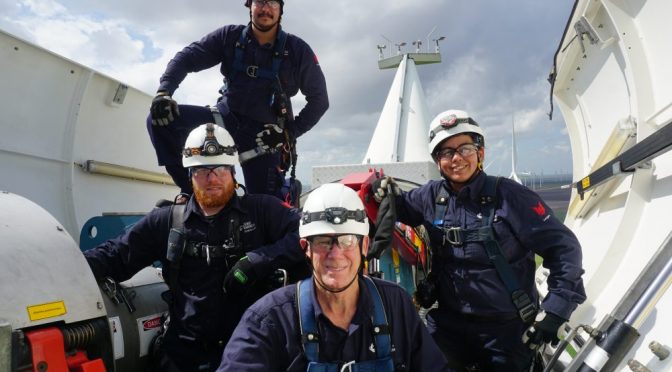After 40 years in the power generation business, Rob Caldwell has seen a lot of change—technologies improve, customer preferences evolve, and policy drivers adapt to reflect the will of the people. As his tenure as AWEA Board Chair comes to a close and he nears retirement as President of Duke Energy Renewables, I had a chance to speak with Rob as he reflected on his career and gave insights on the grid of the future. And that vision holds a lot of promise for wind, solar and storage working together.
“It’s a hard decision for me to retire right now,” he told me. “Because even though we’ve seen tremendous growth, I think there is still tremendous growth ahead of us.”
From demonstration projects to a player on the grid
When Rob began working in natural gas four decades ago, renewables were still a novelty. Projects were expensive and unreliable, essentially demonstrations. Importantly, they also lacked customer demand and awareness.
In Rob’s experience, that remained the case until about 10 years ago, right around the time he moved into renewables. Back then, Rob was working at Progress Energy in North Carolina, and the state had just passed a 12.5 percent renewable portfolio standard (RPS). Rob was put in charge of ensuring Progress Energy secured compliance with the new law, which meant developing, owning and operating renewable assets.
At first, there was concern Progress Energy wouldn’t be able to generate enough renewable kilowatt hours to comply without exceeding its price cap. But something remarkable happened—the cost of wind and solar started falling faster than anyone predicted. By 2015, Progress Energy ended up achieving RPS compliance through 2028 while having spent less than half its price cap. Rob led a renewables division that fairly quickly evolved from a compliance operation to a business operation, showing how rapidly the math changes when costs decline. He soon realized renewables weren’t just something needed to comply with a law—they could play a big role on the grid of the future.
“Renewables are just the next generation of generation,” Rob said.
“Clearly the three key drivers of this business are policy, technology and customer demand,” Rob told me. Policy jump-started the industry, technology improvements and cost declines brought wind and solar to scale, and now customer demand means power generation companies must have a foot in the renewable space.
“Our focus (at Duke Energy) is to be customer-centric,” Rob said. Corporate and industrial customers don’t want to be power generation companies—they want to be retailers, manufacturers and tech companies. That creates an opportunity for utilities like Duke to provide their expertise and offer the renewable energy Fortune 500 businesses are demanding.
What the future holds
As wind, solar and storage supply more of America’s electricity mix, Rob sees the grid evolving along with it. In fact, AWEA’s work on transmission expansion and market design was one of the program areas Rob found most compelling when he agreed to become board chair.
“You need a grid to get it from where the wind and solar resources are to where the load is,” he said. “I think wires are going be a critical enabler for (renewable) growth. I’m very bullish on the grid, both big wire and little wire.”
“The grid is a significant, important asset and will be for a long time to come. I think it will become smarter and optimized as more variable sources come online,” he said.
Rob sees a future where wind and solar supply ever-greater amounts of the country’s electricity, with storage helping to balance out shifts in supply.
“I just think it’s an amazingly interesting time to be in the power business,” he said.
We thank Rob for his service as Board Chair and hope he enjoys a well-deserved retirement!


